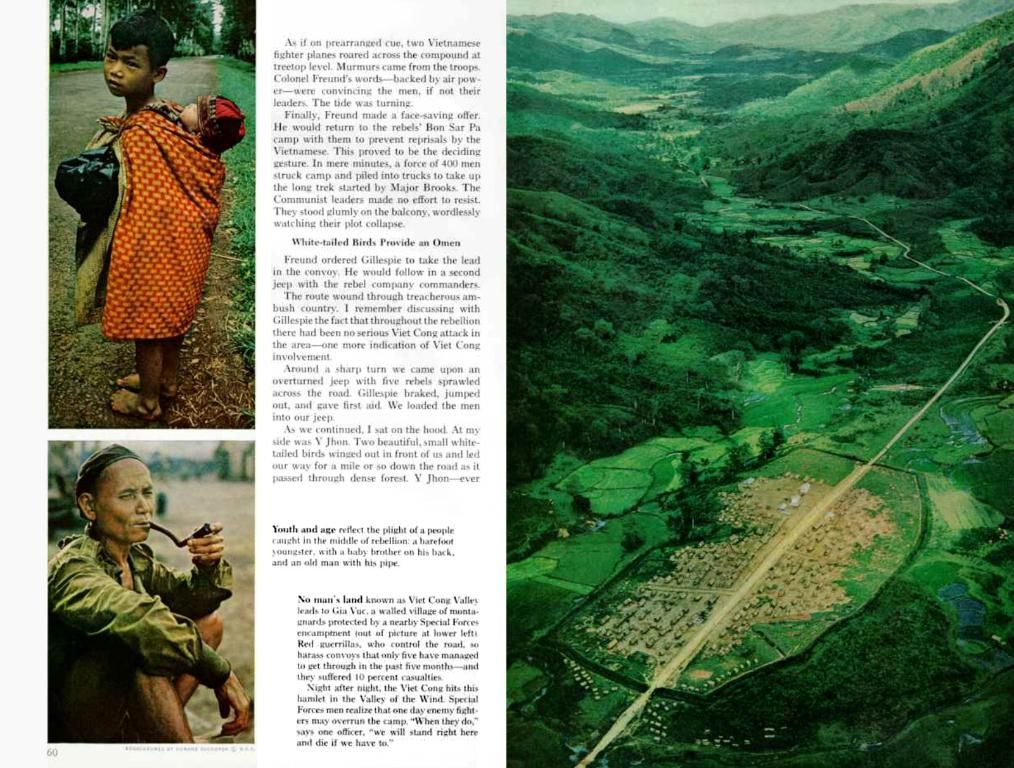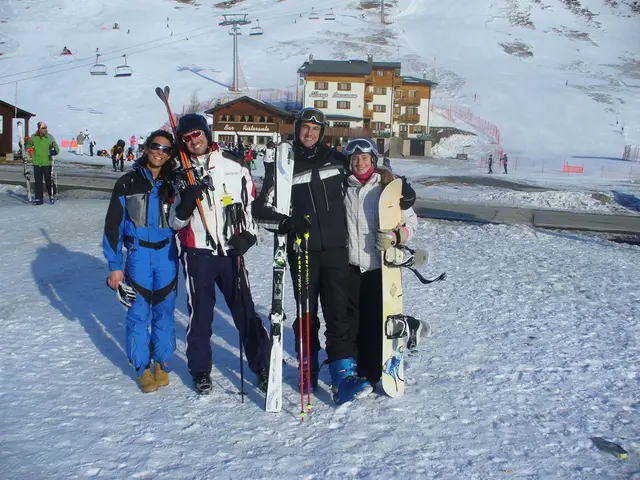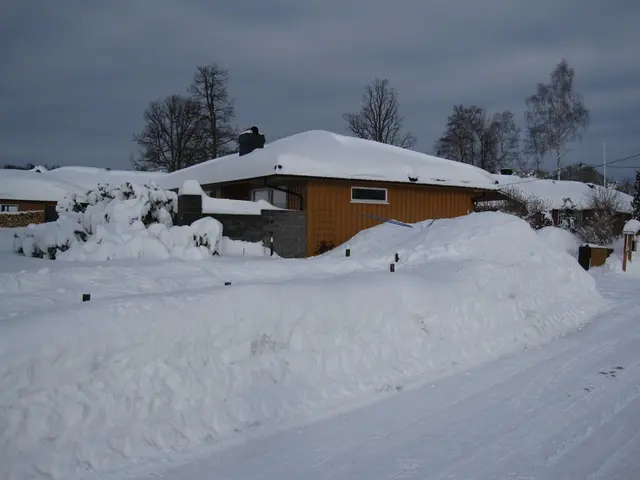Snowfall Woes in the Alps: A Documented Drought
Alpine regions with low snowfall for iconic snow-draped peaks
Winter 2024/25 unveiled unprecedented dryness in the Alps, especially at Germany's highest ski locale, Zugspitze. This winter saw less snow than even the chilly winters of yore, like 1971/72, as reported by the German Weather Service, Geosphere Austria, and MeteoSwiss. The snow cover duration plummeted, falling between 10 to 40% compared to an average winter.
A Dry Winter Not Seen in Nearly a Century
November and early December welcomed some snowfall, yet the dearth persisted. In terms of precipitation, the winter half-year in Bavarian Alps during 1933-1934 was drier, with less than 400 liters per square meter, compared to about 470 liters in the previous winter half-year.
Precipitation Lagging Behind the Average
This number falls significantly short of the average of approximately 730 liters for the years 1991-2020. While the winter half-years of 1971/72, 2010/11 (with around 480 liters), and 1948/79 (with 485 liters) showed similar levels, the German Weather Service indicates. The dearth of winter precipitation, when both evaporation and plant water demand are minimal, carries less impact than a prolonged summer drought.
Lower snowfall translates to less meltwater, primarily affecting floods in the North Alpine region during prolonged rainfall.
Another Tough Year for the Glaciers
Given the above conditions, weather services anticipated substantial losses for the glaciers this year. Wet, mild winters, and wet, cold summers are crucial for glacier preservation, yet they've been scarce since the 1990 temperature spike, accompanied by sunnier spring and summer conditions.
The central and eastern Alps were usually painted with bright skies this winter due to high-pressure influence. Temperatures were around two degrees warmer in high-altitude areas than the average, whereas valleys sometimes even saw a slight chill. This phenomenon can be attributed to numerous inversion weather situations in November when cooler air remained in the valleys while warmer air hovered above.
Drought Impact Less Drastic Westward
Drought impacts were less severe in Switzerland, according to meteorologists. The Bernese and Valais Alps experienced average precipitation and snow conditions overall.
Research associates the Alps' temperature increase with climate change since the late 19th century, underlining the region's vulnerability to the climate crisis[2]. Record low snowfall could thus be an ominous harbinger of things to come.
Consequences of Reduced Snowfall and Glacier Depletion
Impact on Glaciers
- Thinning: Reduced snow accumulation can gradually deplete glacier thickness, heightening fears of accelerated glacier retreat.
- Long-term Decline: Prolonged dry winters can significantly diminish glacier size and health, adversely affecting ecosystems and downstream water supplies.
Snow Levels' Impact
- Shallow Snow Depth: Lower snowfall minimizes snow depth, as evident in Zugspitze, where the snow cover fell below expectations for the season[2].
- Tourism Challenges: Reduced snowfall can negatively impact ski resorts, potentially shortening the ski season or influencing winter sports amenities.
- Ecological Upheaval: Reduced snowfall can impact habitats of plants and animals adapted to snowy conditions, disrupting local biodiversity.
These repercussions extend far beyond the immediate environment, threatening regional climate stability and economic stability.
- The current climate-change scenario poses a significant threat to the environmental-science of glaciers in regions like the Alps, as documented in the winter of 2024/25, where reduced snowfall could lead to thinning and long-term decline of glaciers.
- Lower snowfall not only affects tourism, making ski resorts struggle with shorter seasons or altered winter sports amenities, but it also impacts weather patterns by reducing snow depth and potentially causing ecological upheaval for plants and animals adapted to snowy conditions.






